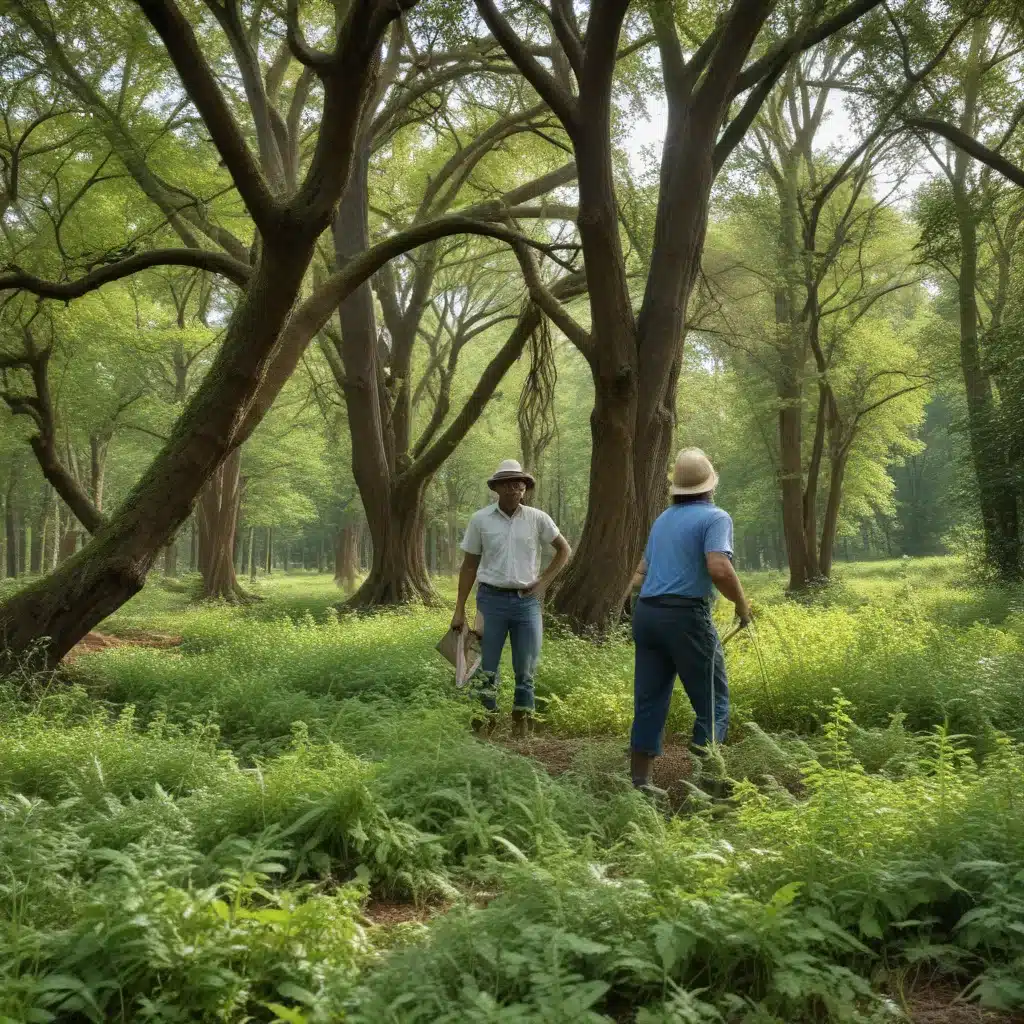
As a tree care specialist writing for TriCounty Tree Care, I am acutely aware of the profound importance of environmental preservation, particularly in times of crisis. The world we inhabit is facing a multitude of challenges, from the devastating effects of climate change to the depletion of natural resources. Yet, amidst these crises, the preservation of our precious green spaces and sustainable practices remains a critical imperative for safeguarding the future of our planet.
Environmental Preservation: A Lifeline in Turbulent Times
The importance of environmentalism cannot be overstated. Sustainable practices that minimize our carbon footprint, promote renewable energy sources, and foster a circular economy are essential for mitigating the impact of climate change and resource scarcity. As a tree care specialist, I understand the critical role that trees and other vegetation play in maintaining ecological balance and providing essential services such as air purification, carbon sequestration, and habitat preservation.
Sustainable Practices: The Path to Resilience
In times of crisis, the adoption of sustainable practices becomes even more paramount. By embracing renewable energy sources like solar and wind power, we can reduce our reliance on fossil fuels and mitigate the impact of resource scarcity. Similarly, the principles of a circular economy, which emphasize waste reduction, recycling, and upcycling, can help us navigate the challenges posed by resource depletion and environmental degradation.
Ecological Stewardship: Safeguarding our Natural Heritage
Alongside sustainable practices, the preservation of our natural environment is a critical component of environmental preservation. As a tree care specialist, I am committed to the stewardship of our ecological systems, ensuring that the rich tapestry of biodiversity and thriving green spaces are maintained for future generations. This involves proactive measures to protect habitats, conserve endangered species, and promote the restoration of natural landscapes.
Preserving Green Spaces: The Heartbeat of Resilient Communities
The preservation of green spaces is not merely an aesthetic concern; it is a fundamental component of community resilience and societal well-being. Urban green infrastructure, such as parks, greenways, and community gardens, not only enhance the visual appeal of our cities but also provide essential ecosystem services, promote physical and mental health, and foster a sense of community among residents.
Urban Green Infrastructure: Oases of Resilience
In times of crisis, these urban green spaces can serve as vital refuges, offering respite and recreational opportunities for individuals and families. By investing in the preservation and expansion of parks, greenways, and community gardens, we can create oases of resilience within our cities, fostering a sense of community and promoting physical and mental well-being.
Protecting Biodiversity: Safeguarding the Web of Life
Beyond urban green spaces, the preservation of biodiversity is essential for maintaining the delicate balance of our natural ecosystems. As a tree care specialist, I recognize the vital role that trees and other vegetation play in providing habitats for a multitude of species. Through habitat conservation efforts and the protection of endangered species, we can safeguard the intricate web of life that sustains our planet’s ecological resilience.
Sustainable Practices: Cultivating a Greener Future
The preservation of our green legacy is inextricably linked to the adoption of sustainable practices that promote environmental stewardship and resource conservation. By embracing renewable energy sources and circular economy principles, we can reduce our carbon footprint and build a more resilient future.
Renewable Energy: Powering a Sustainable Future
The transition to renewable energy sources, such as solar and wind power, is a critical component of environmental preservation. By investing in these clean energy alternatives, we can reduce our reliance on fossil fuels and mitigate the impact of climate change. As a tree care specialist, I advocate for the integration of renewable energy systems into our landscape design strategies, ensuring that our green spaces are not only aesthetically pleasing but also environmentally sustainable.
Circular Economy: Closing the Loop
The principles of a circular economy, which emphasize waste reduction, recycling, and upcycling, offer a holistic approach to environmental preservation. By minimizing waste and promoting the reuse of resources, we can alleviate the strain on our natural resources and build a more sustainable future. As a tree care specialist, I encourage the adoption of circular economy practices in the management and disposal of tree waste, contributing to a more eco-friendly industry.
Societal Resilience: Empowering Communities for a Greener Future
The preservation of our green legacy extends beyond environmental considerations; it is also a matter of societal resilience and community empowerment. By engaging with local communities and advocating for sustainable policies, we can foster a grassroots movement that champions environmental preservation and drives meaningful change.
Community Engagement: Cultivating Environmental Stewardship
The active involvement of local communities in environmental preservation efforts is crucial for building a more resilient and sustainable future. Through environmental education programs, community gardens, and grassroots initiatives, we can empower individuals to become active stewards of their local environment. By fostering a sense of ownership and responsibility, we can cultivate a deep appreciation for the natural world and inspire collective action to protect it.
Policy and Governance: Shaping a Sustainable Future
Alongside community engagement, the role of policymakers and governing bodies in environmental preservation cannot be overstated. By enacting robust environmental regulations, promoting sustainable development initiatives, and aligning with global frameworks such as the United Nations Sustainable Development Goals, we can create a legal and institutional framework that supports and incentivizes environmentally sustainable practices. As a tree care specialist, I advocate for policies that protect our green spaces, promote urban forestry, and ensure the responsible management of natural resources.
In conclusion, the preservation of our green legacy is a multifaceted endeavor that requires a holistic approach encompassing sustainable practices, ecological stewardship, and community empowerment. By embracing renewable energy, circular economy principles, and the protection of biodiversity, we can build a more resilient and sustainable future for ourselves and generations to come. As a tree care specialist at TriCounty Tree Care, I am committed to playing a vital role in this endeavor, using my expertise to preserve and enhance our green spaces and promote environmental stewardship within our community.


